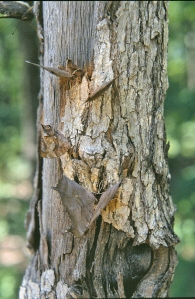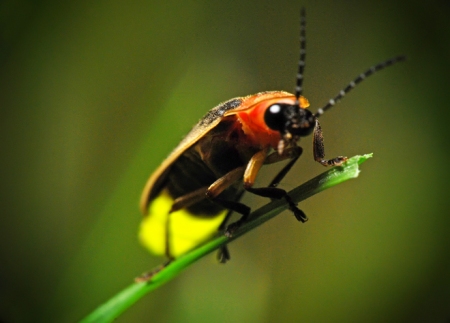My office at Petit Jean State Park may be a bit cramped, but I am fortunate to have a window right beside my desk to let in the afternoon sunshine and allow me to see the comings and goings of some of the visitors to our park visitor center. However, it can be a bit challenging to stay focused on my work at the computer when the birds come to visit. We interpreters like to feed the songbirds, and this helps folks who come to the visitor center get a better look at them, especially if they go into the exhibit room and look out through the large window at the pond, manmade waterfall and feeders in the back. From time to time we also put out birdseed and suet in front of the building, which is where my window is located. The Carolina wren, tufted titmouse, pine siskin, Northern cardinal, and dark-eyed junco are just a few of the numerous bird species that may be observed hanging around bird feeders here on Petit Jean Mountain.
In the time it has been taking me to write this, I have seen quite a few species of birds, including white-throated sparrow, pine warbler, red-bellied woodpecker, American crow, white-breasted nuthatch, brown-headed nuthatch, brown creeper, Carolina chickadee, and American goldfinch. (Not to mention that expert raider of bird feeders, the gray squirrel, busily stuffing itself and close enough to
touch if the window were open.) The woodpecker is particularly distracting, with its brilliant red coloration on its head catching my eye, and the less noticeable red on its belly (which gives it its name) sometimes visible. The male warblers are also eye catching, with their mixed coloration that includes olive green and vibrant yellow. (As a co-worker of mine commented about an especially brightly colored male, “If that one doesn’t attract a mate, he’ll just be really unlucky!”)
It’s also interesting to observe the “pecking order” among the different kinds of birds. Some birds give the appearance of being downright “mean” to other birds when competing for food (which is actually just a natural thing for them to do.) A nuthatch may be chased away from the suet by a warbler. The warbler is intimidated enough to move out of the way if a woodpecker comes along. And if a crow comes to feed, all the other birds give him plenty of room as he hacks away and makes short work of the suet block! (It’s typical to see the smaller birds scrounging on the ground after the crow leaves, cleaning up some of the mess he left behind.)
Educating the public about birds and presenting bird related programs is one of my favorite things about my job. I am continually getting better at bird identification, and I enjoy observing and learning about birds, as well as inspiring park visitors to get interested in bird watching and make their own observations.
Well, it looks like the birds have consumed most of the birdseed it seems like we just put out for them. Time to go give them some more!
Rachel is a native Arkansan and a graduate of Ouachita Baptist University, with a Bachelor of Science in biology. Her interpretive experience includes work as a seasonal interpreter at Lake Dardanelle State Park, 1997 -1999, and as a full-time interpreter at Crater of Diamonds State Park, 2003 – 2007. She has been a full-time interpreter at Petit Jean State Park since September of 2007. Rachel is a member of the National Association for Interpretation and became a Certified Heritage Interpreter in 2009. “One of my favorite things I do in my job is helping park visitors discover new ways to enjoy and learn from nature.”







 Posted by Arkansas State Parks
Posted by Arkansas State Parks 













 Facebook
Facebook Twitter
Twitter YouTube
YouTube
